Photographs of abandoned houses, distressed neighborhoods, and old factory buildings with historic details
The iconic Gateway Arch towers over downtown St Louis, shining with the optimism of the space age mixed with the nation’s confident image of itself. It was designed by architect Eero Saarinen in 1947 and construction was completed in 1965. Often called the “Gateway to the West,” it represents St. Louis’ legacy as the launching point of western expansion and settlement, beginning with the Lewis and Clark expedition of 1804. It recalls a time when we believed in boundless resources and a sense that anything was possible.
St. Louis was established in the 1760s by French fur traders and became incorporated as a city in 1822. The city prospered from trade thanks to its position near the Mississippi, Illinois, Missouri Rivers, and from river boat traffic from New Orleans and elsewhere.
By 1900, St Louis had become an industrial and manufacturing center, thanks to a burgeoning immigrant influx, access to abundant water and rail transportation routes, and its location in the center of the nation.
The city’s population peaked at 856,000 in 1950. Today, St Louis is Missouri’s largest city, and is designated as a Global City on multiple indices, including the Globalization and World Cities Research Network, and Oxford’s Global Cities Index. Those lists highlight cities around the world based on their economic power, urban development, and the global impact of their cultural, educational, or innovation influence.
But the city is facing a list of severe problems.
The populations of the city and the metro area are both falling to a degree that one local news article called it chronic. In fact, St. Louis’ population is falling faster than any other major US city. At the time of this writing, the city’s population was about 279,000 people and the metro area about 2.8 million people. Crime — especially violent crime — ranks the city among the worst in the nation.
The photographs included in this portfolio represent the time when St. Louis vied to be one of America’s great cities: a hard-working, prosperous dynamo.
The Chemical Building
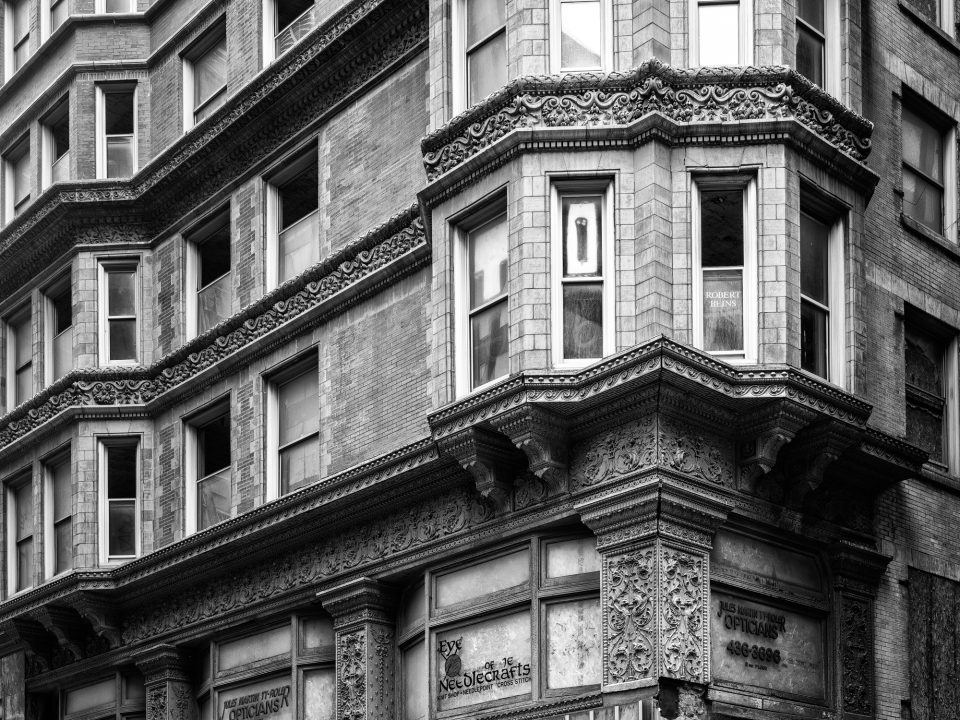
The Chemical Building is a 17-story, 182,000 square foot office tower in downtown St. Louis. Completed in 1896, the building is currently vacant.
Robert Beins Jewelers opened in 1941 and closed permanently in 2009 after 68 years in business.
Jules Martin Ty-Roler Opticians moved into this building in 1963 and is no longer in business.
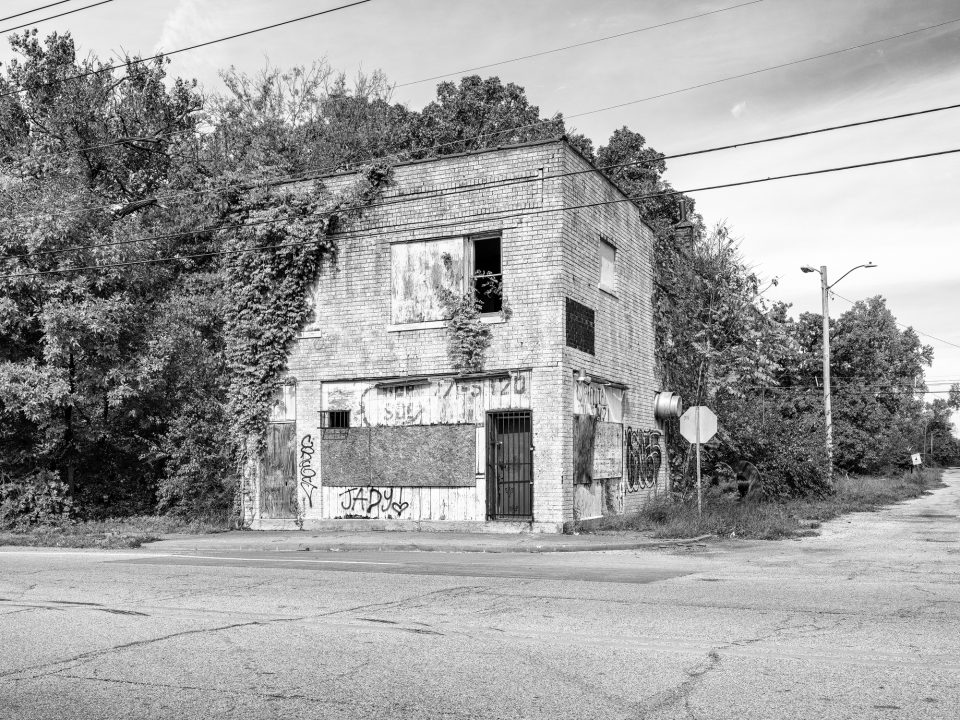
A former chop suey restaurant in East St. Louis, now in ruins.
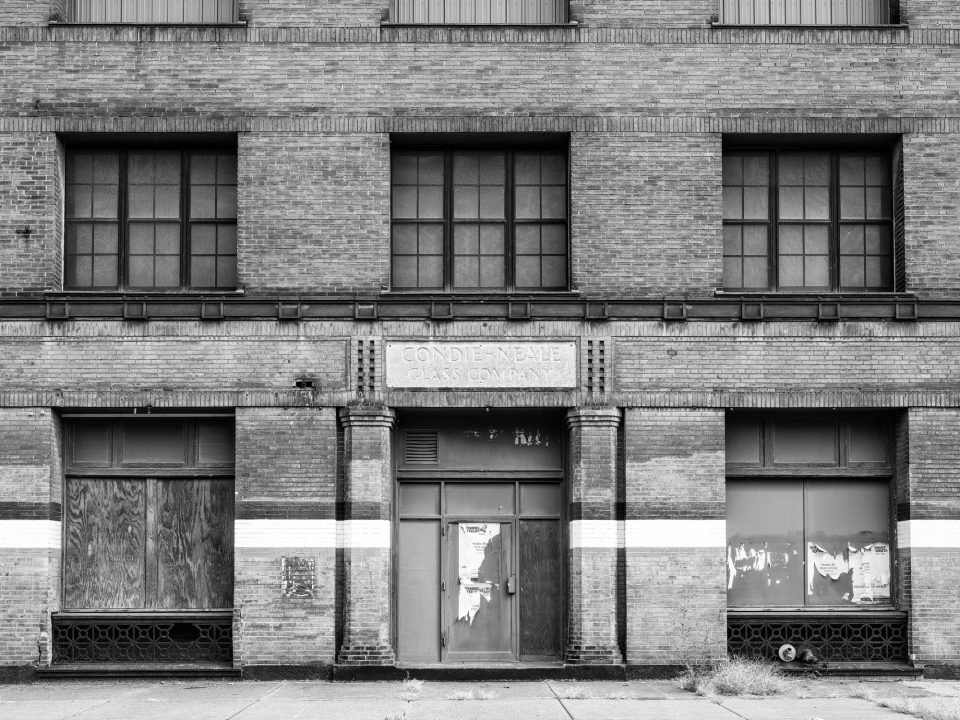
The Condie-Neale Glass Company
The Condie-Neale Glass Company made decorative glass, stained glass, and leaded glass at this location from 1903 until 1915, when the name changed.
A member of the Art Glass Guild of St. Louis, Condie-Neale was commissioned to create “Neptune’s Daughter,” a stained glass ceiling in the Fordyce Bathhouse, a National Historic Landmark within Hot Springs National Park in Arkansas.
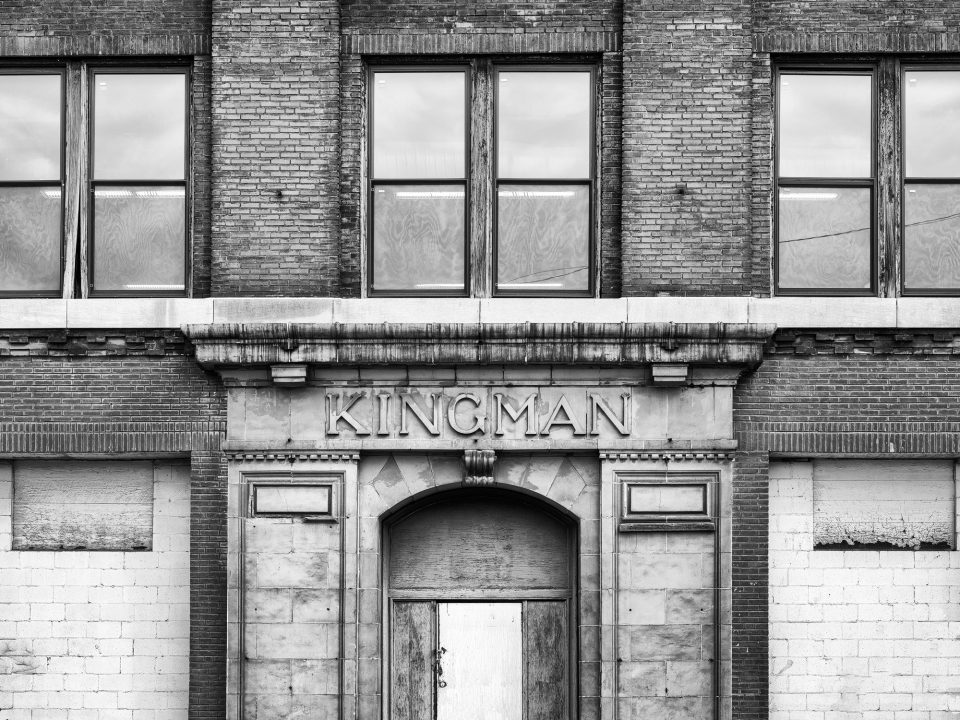
The Kingman Building
The Kingman Building on North Broadway was the home of the Kingman Plow Company, starting in 1907. The company was founded in Peoria, Illinois by Civil War veteran Martin Kingman. The St. Louis factory was part of a boom of new industry that opened in the North Broadway area thanks to the new Southern Rail Terminal completed around 1906.
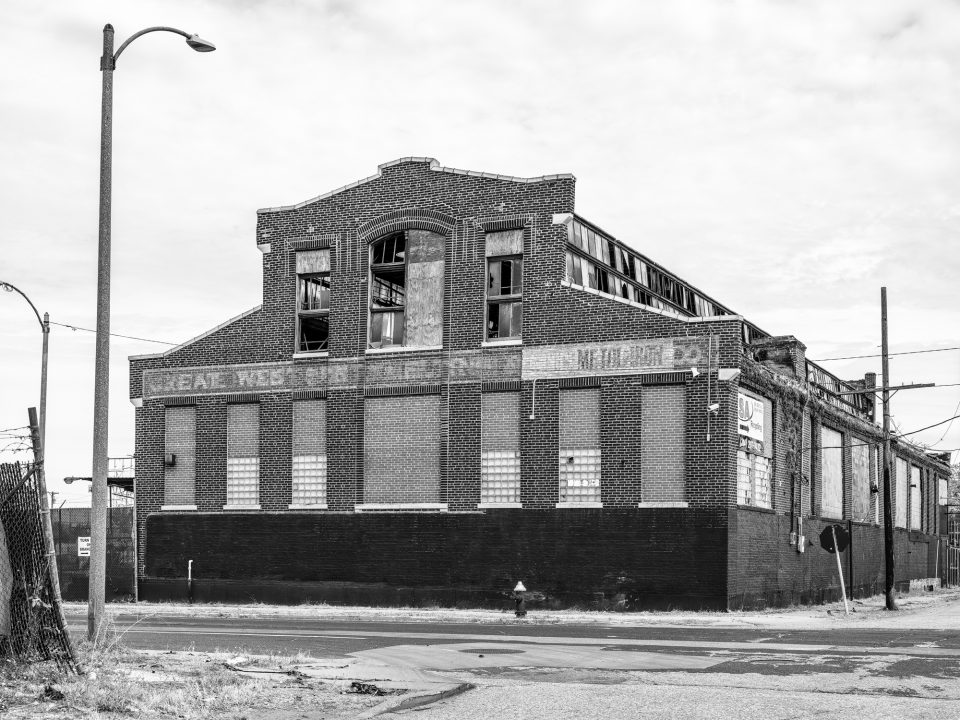
Great Western Metals Smelting & Refining Company.
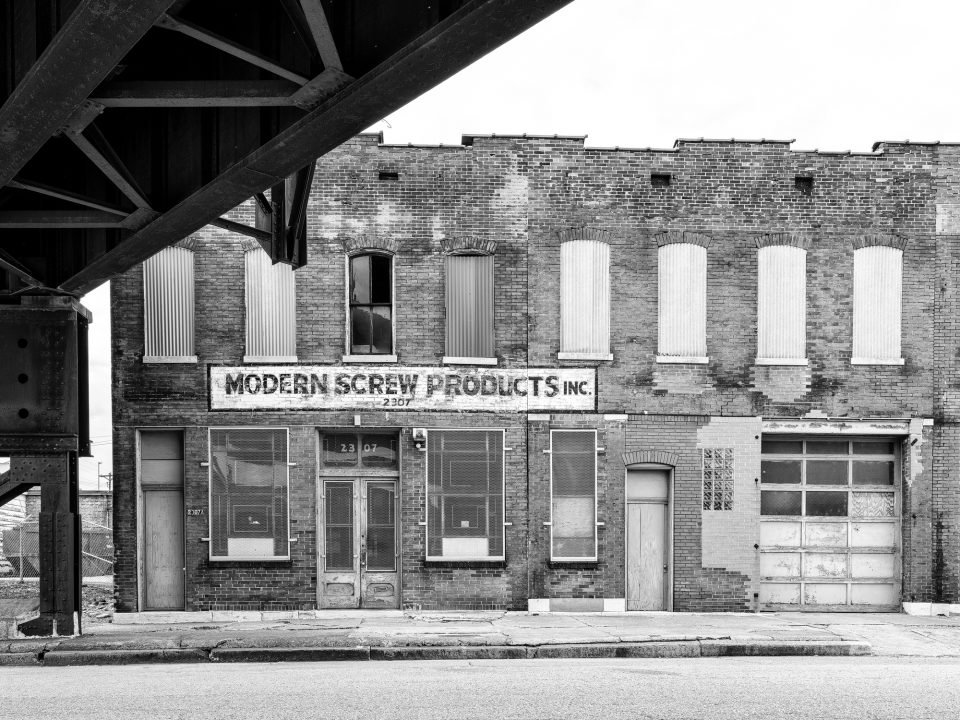
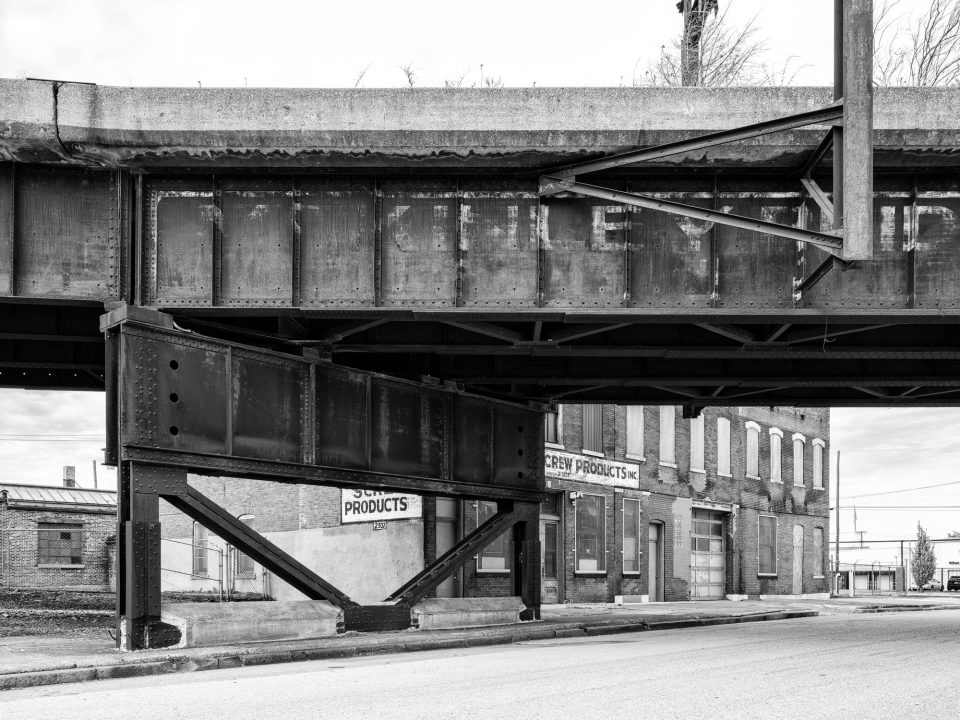
Modern Screw Products
Modern Screw Products, founded in 1923, is still very much in business.
Their website says that the company supplies stabilizing fittings for St. Louis’ famous arch and provides parts fabrication for customers across the U.S.
Their mechanisms can be found in sporting goods, in U.S. military rifle stocks, in Navy submarines, and in mining equipment.
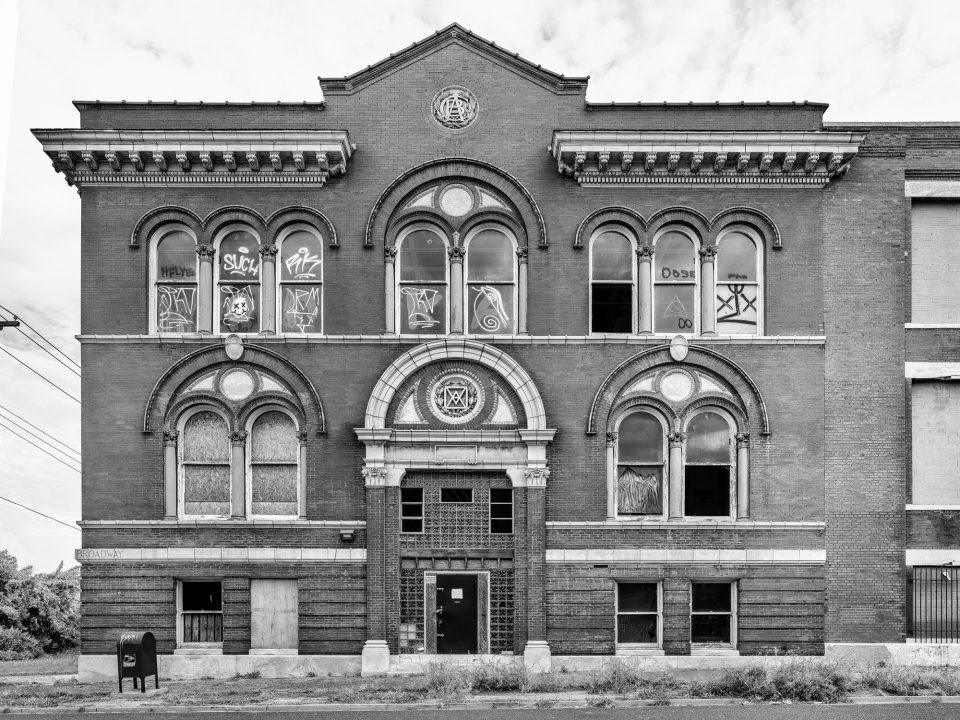
American Brake Company
The American Brake Company building was constructed in three phases from 1901—1919. The company manufactured brakes for freight trains. The company was founded in St. Louis in 1880. By 1904, over 1500 people worked in the factory. The American Brake Company sold the facility in 1941.
Tycoon George Westinghouse acquired the company after noticing it at the National Railroad Exposition of 1883 in Chicago. He commissioned architects August Weber and Albert Groves to design this building.

The Standard Stamping Company
The Standard Stamping Company factory was built in stages from 1887–1892, and another in 1920. It was founded in 1881 in St. Louis by German immigrant George Wiegand.
The company manufactured stamped metal products for consumer and industrial use; things like cookware, tea kettles, paint cans, gasoline cans, roofing and gutters, ductwork, and similar products.
George Wiegand died in 1928, and his son George took the reins at the company, but the great depression led to its bankruptcy in 1935. The Biedermann Furniture Company occupied the building in 1950 to make wooden furniture. In recent years the vast structure has been used for storage.
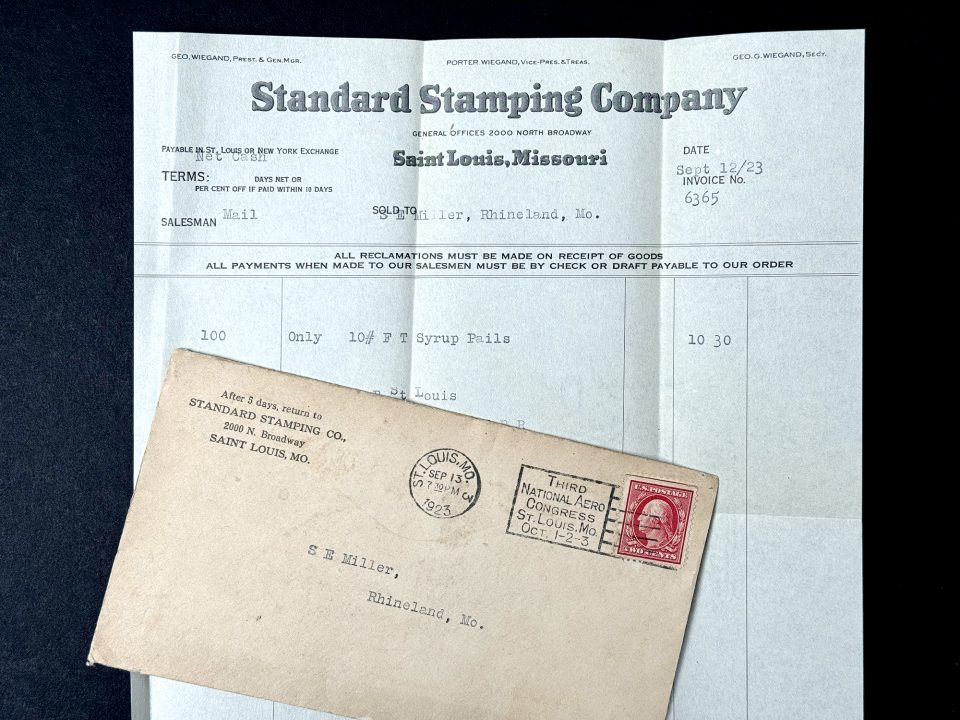

Crystal Grill Building
Part of the building that housed the old Crystal Grill, which opened in 1946 and closed in 2008. The family still owns the building and holds occasional paranormal events in the space. According to their Facebook page, the building is quite haunted.
These ironwork storefronts and columns were made in St. Louis by the Christopher & Simpson Architectural Iron and Foundry Company, established in 1873.
Christopher & Simpson was one of at least nine foundries making architectural storefronts in the city. St. Louis was a hotbed for iron foundries due to its proximity to the vast iron deposit at Iron Mountain
in Missouri.
Also, because these storefronts were mail ordered from catalogs, the city’s central location and ready access to shipping via rivers and rail lines also played a part.
College Hill Neighborhood
According to “History of St. Louis Neighborhoods,” written by Norbury L. Wayman (1978), College Hill was built primarily in the years between 1880 and 1920. Housing consists of a mixture of red brick single family homes, and flats divided for two or four families.
The hilltop neighborhood is home to the city’s oldest extant water tower, and was originally served by horse drawn transit, which became electrified in the 1890s, and was motorized in the 1950s.
Today, the neighborhood is dotted with abandoned and often collapsing houses, vacant lots, and a significant number of permanently closed storefronts and churches along the main streets.

The Grand Avenue Water Tower
The Grand Avenue Water Tower was built of brick and cast iron in 1871 to resemble a Corinthian column. Listed on the National Register of Historic Places on June 15, 1970, it’s the oldest extant water tower in St. Louis.
It was decommissioned as a working water tower in 1912, and was restored in 1998. At 154 feet (47 meters), it remains the tallest freestanding Corinthian column in the world — more than twice as tall as anything from antiquity.
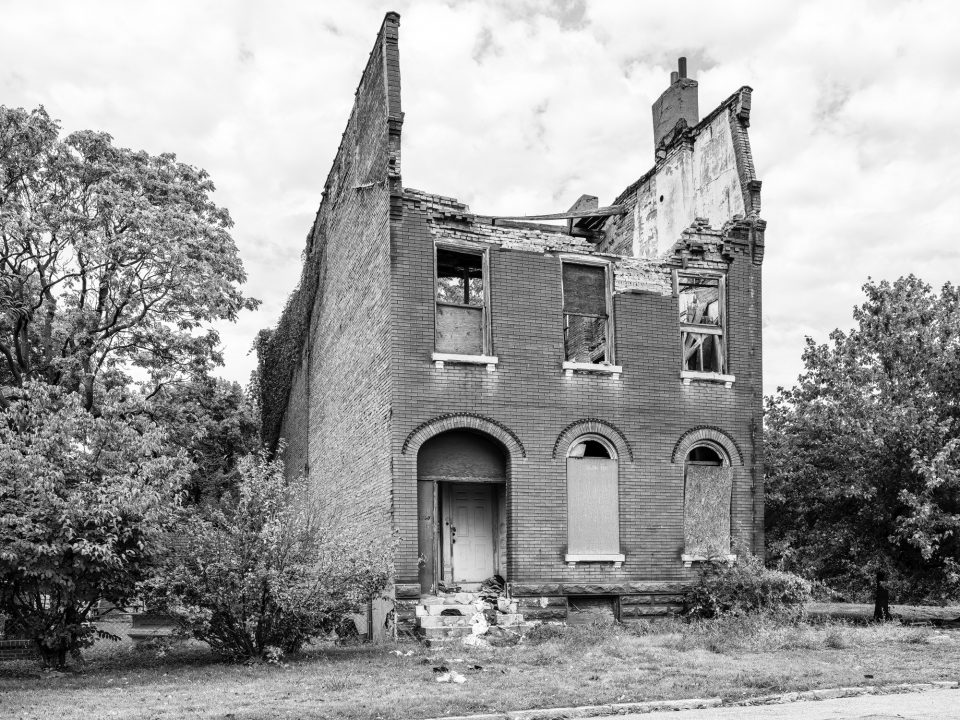
This collapsing house still has clothing strewn across the front steps. In the side yard behind the chain link fence stand two objects that appear to be tombs, one of which is visible in this photograph.

Ruins of a four family tenement flat in the North St. Louis neighborhood of College Hill.
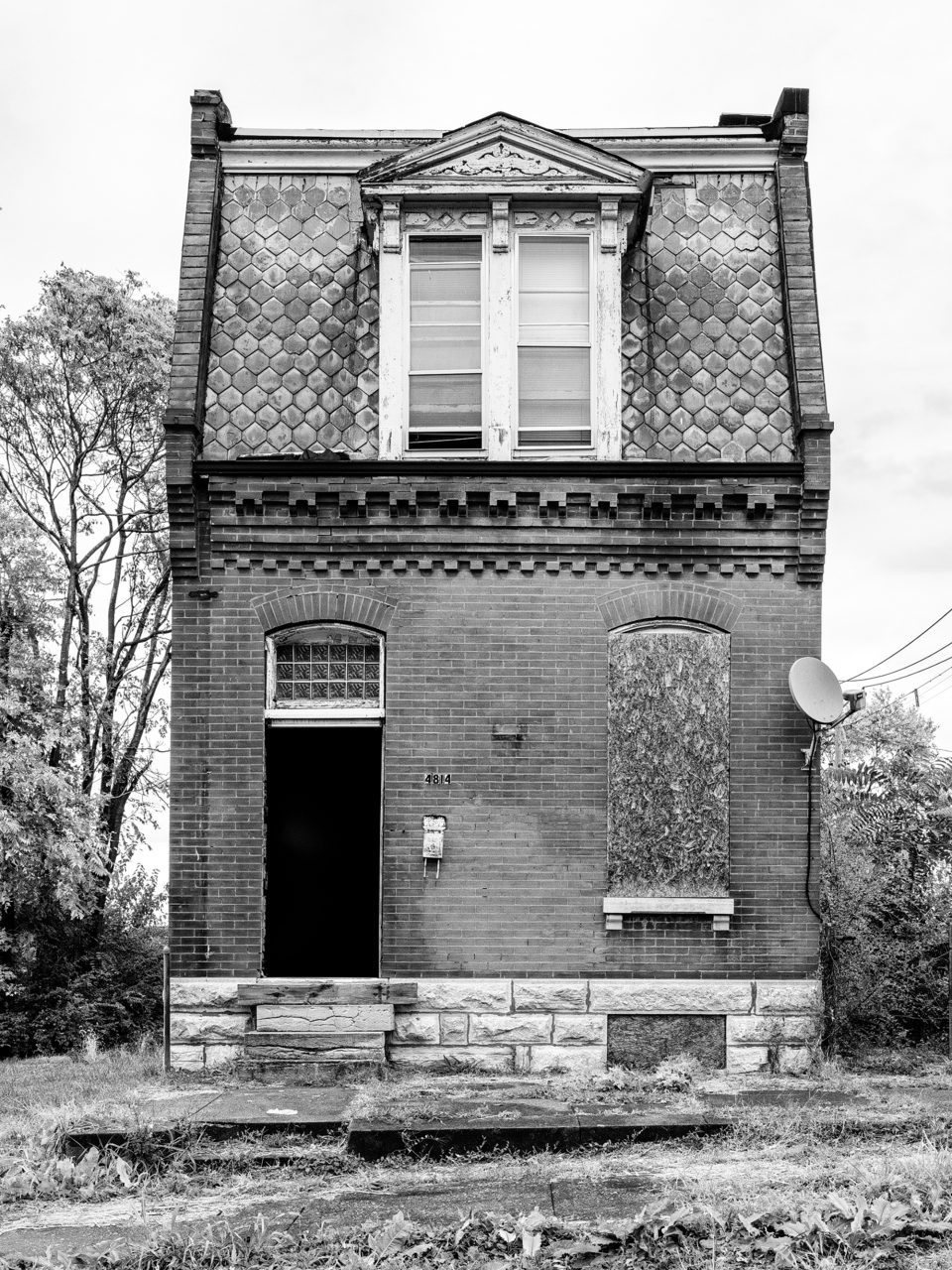
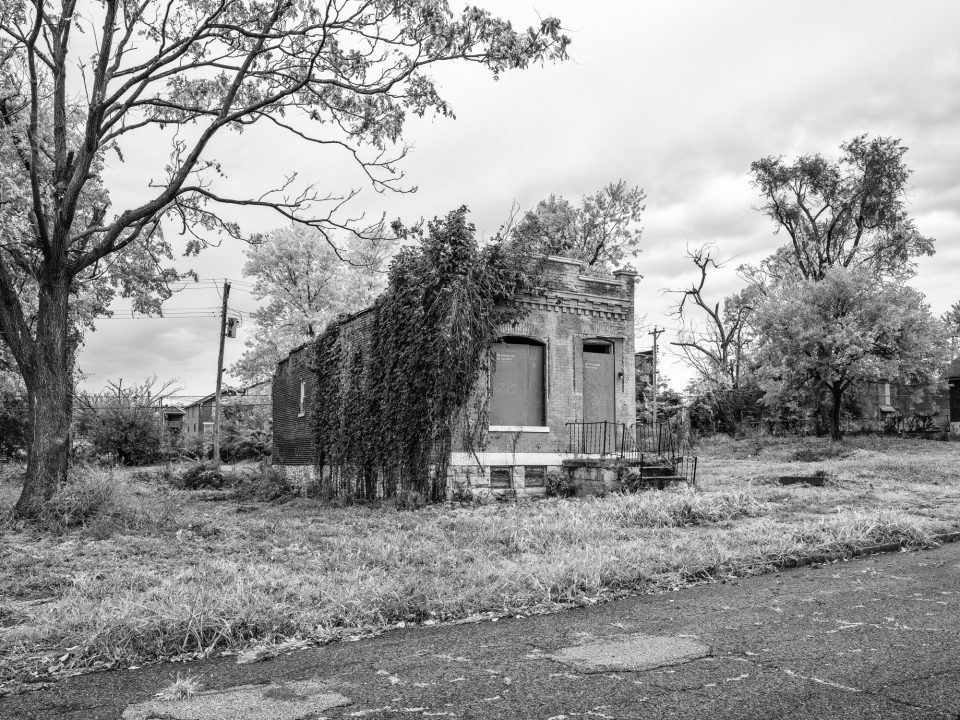
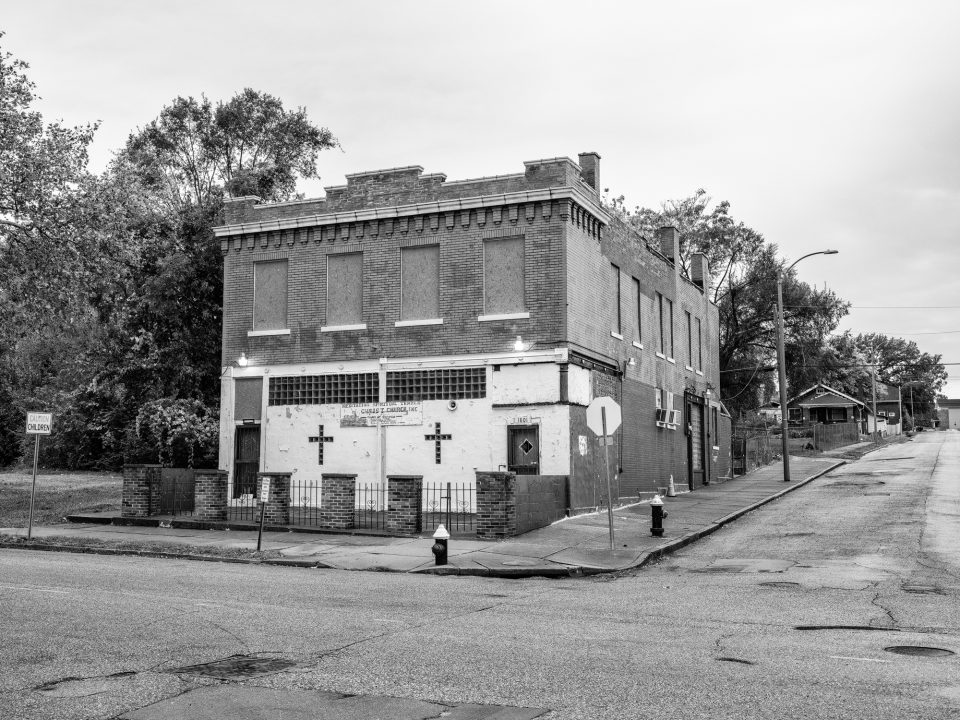
Sources and Links
Facebook. The Crystal Grill.
https://www.facebook.com/profile.php?id=100067178917470
Global Cities Index.
https://www.oxfordeconomics.com/global-cities-index/
Globalization and World Cities Research Network.
https://npgallery.nps.gov/AssetDetail/NRIS/12000928 (no info on website)
Internet Archive. “Catalogue of Specialties.” 1914.
https://archive.org/details/CondieNealeGlass/mode/2up
Missouri Historical Society. Swekovsky Collection.
https://highlights.mhs.yourcultureconnect.com/e/curated-collections
Missouri State Parks. “American Brake Company Building.”
National Register of Historic Places Registration Form.
https://mostateparks.com/media/pdf/american-brake-co-building
Missouri State Parks. “North Riverfront Industrial HD.”
National Register of Historic Places Registration Form.
https://mostateparks.com/media/pdf/north-riverfront-industrial-hd
Missouri State Parks. “The Standard Stamping Company Factory.” National Register of Historic Places Registration Form
https://mostateparks.com/media/pdf/standard-stamping-company-factory
Modern Screw Products.
https://modernscrewproducts.com/
New York Times. “George G. Wiegand.” (Obituary).
https://www.nytimes.com/1949/07/23/archives/george-g-wiegand.html
Next STL. “Rezoning, Tax Abatement For 2000 N Broadway Passed By BoA.”
https://nextstl.com/2021/02/rezoning-tax-abatement-for-2000-n-broadway-passed-by-boa/
St. Louis Missouri.Gov. “History of St. Louis Neighborhoods.” Norbury L. Wayman. 1978.
https://www.stlouis-mo.gov/archive/neighborhood-histories-norbury-wayman/bissell/rescomind4.htm
St. Louis Patina. “The Kingman and John Deere Buildings, North
Broadway — Saint Louis.”
https://stlouispatina.com/kingman-and-john-deere-buildings-north-broadway
STL News. “The Biggest Threat to the Future of St. Louis: Crime, Decline, and Political Paralysis.”
https://www.stl.news/the-biggest-threat-to-the-future-of-st-louis/#:~:text=deterrent%20to%20growth.-,Population%20Decline:%20A%20Shrinking%20City%20With%20Growing%20Problems,quality%2Dof%2Dlife%20improvements.
Wikipedia. “Grand Avenue Water Tower.”
https://en.wikipedia.org/wiki/Grand_Avenue_Water_Tower
